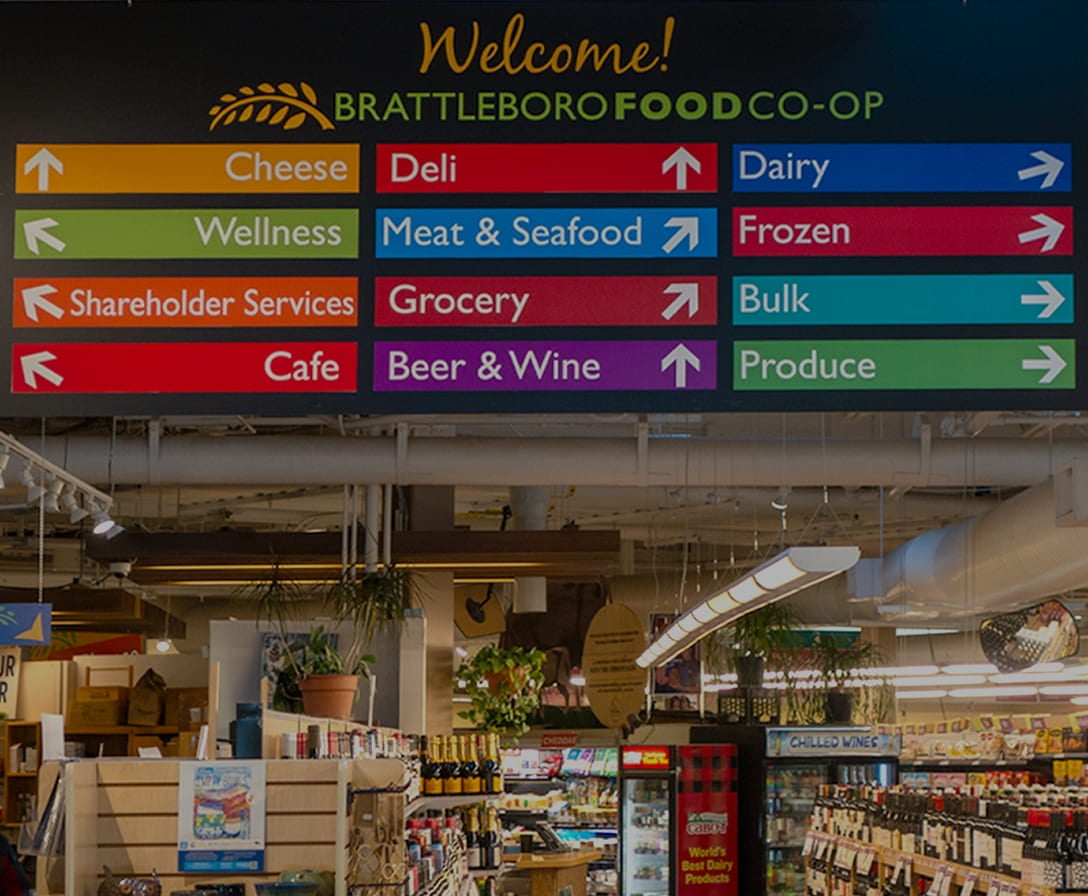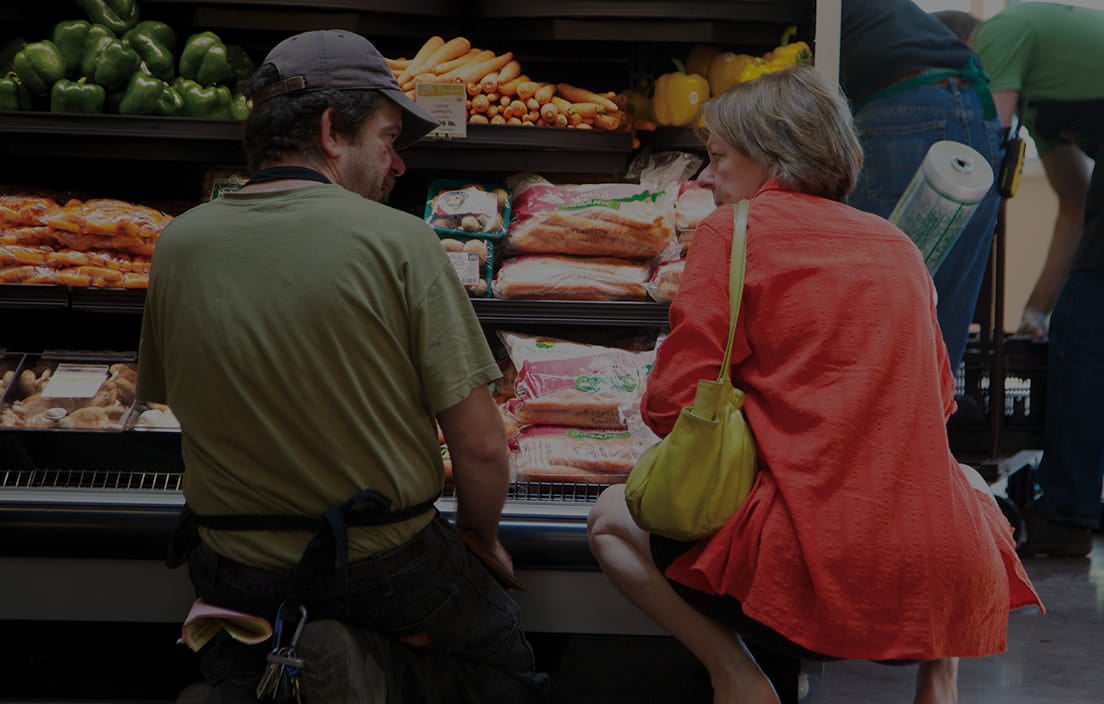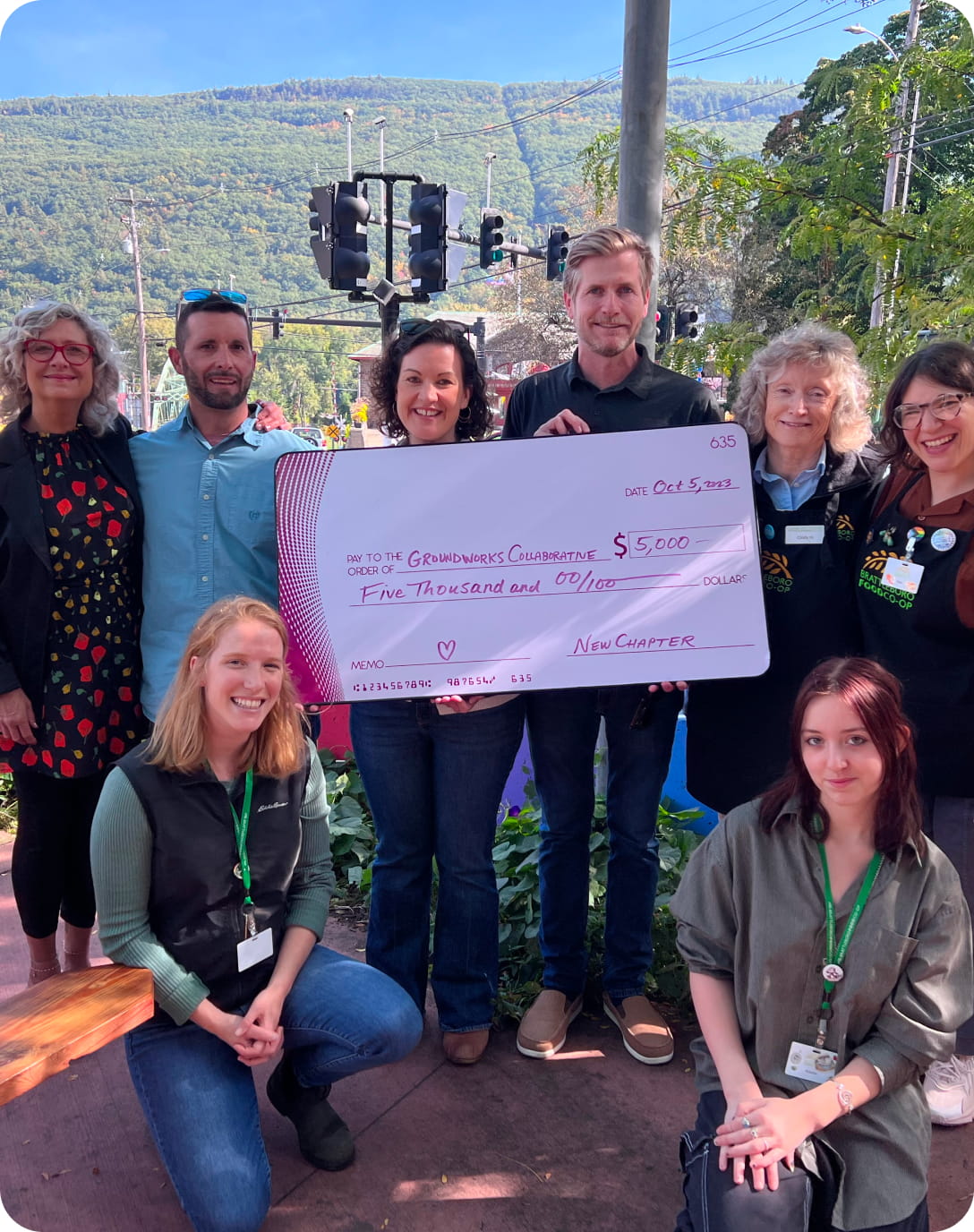Couch Brook Farm
When I asked Elaine Morley what it’s like to have the same job for forty-one years, she replied that things are ever-changing at Couch Brook Farm. Her day’s work varies according to the seasons and cycles of growth. And when you purchase the organic fruits, flowers, veggies, herbs, or pottery produced at Couch Brook, you not only contribute to a small, independently- and woman-owned organic farm, but you also support a rootedness and steady, enthusiastic dedication that has lasted since Elaine created her business in 1981 at the age of twenty-three. Now, at sixty-four, she and Couch Brook are still going strong.
Elaine has been digging into this work since her early teens. Though all the matriarchs in her family grew flowers with much dedication and pride, there wasn’t much farming to speak of in her family of origin. But she recalled that in her early teens she read Silent Spring by Rachel Carson, which she said “woke me up to a lot of stuff.” She attended an unusual, unaccredited alternative high school called Woolman Hill, where there were big vegetable gardens, a greenhouse, and farm animals. A few years later she graduated from the Stockbridge School of Agriculture at UMass Amherst with a degree in horticulture. Those were the days when organic farming was either unknown or considered an oddity; Stockbridge didn’t teach it and her interest in it made her an outlier there. She told me that when she first started out on her own, if she wanted to buy organic fertilizer, there wasn’t anything available—it was all just pesticides. “Things have gotten a lot better on the organic front,” she said, not only in terms of availability of products, but in terms of techniques and education, too. In ‘81, when she started Couch Brook, there were no resources available to develop the skills to succeed in creating an organic farm. But she made it happen. “Start with a plan, and figure out what works and what doesn’t,” she said. Couch Brook has been certified organic since 1991.
There was a “mini ice age” (Elaine’s words) that first winter on the property. Temperatures dropped to thirty degrees below zero, and all the peach trees she’d planted died. But for Elaine, farming is a calling, not just a job. She carried on. Today there are two unheated hoop houses and three heated greenhouses, and she sells flowers, herbs, fruits, vegetables, and her hand-made pottery to several businesses in our area. Her husband helps out quite a bit and assists in maintaining the property, and a couple of her neighbors lend a hand during the busiest times, but Elaine does most of the work herself. She just “likes to watch things grow… I get to do what I like to do, and work for myself.”
The season of growth starts sooner than you might expect. After a very short and sweet winter break, pansies are the first plants to need attention, and by mid-February all the flowers must be underway: petunias, snap dragons, begonias, and dozens more. At that point the starter greenhouse is full of infant pansies already needing to be pruned, while the second greenhouse is full of transplants.
Pruning fruit trees and bushes comes next: in March there are over three hundred blueberry bushes to prune, and fall raspberries as well. Some of the blueberry bushes at Couch Brook were actually planted in 1981, and they’re still producing delicious fruit! This is a testament to Elaine’s skill not just in taking care of her plants over the years, but also in her choices of what to grow. She explained that she makes sure to work with varieties that not only rate high for flavor, but also for hardiness. Crucially, Couch Brook “specializes in plant varieties that thrive in our New England conditions.” These conditions are certainly shifting—climate change continues to alter our environment. It has created challenging issues, such as ticks, but has also expanded the range of plants she can grow. She takes it in stride, adjusts, and moves on.
By mid-March the greenhouses are full of burgeoning flowers, herbs, and vegetables, and these require all her attention and care. “When you have greenhouses full of plants, you have to be there, you can’t leave for the day,” said Elaine. Like humans, when flowers are babies they need constant attention. Even an hour away could spell disaster for these delicate lives, if the temperature gets too high or low, or if they lack water at a critical moment. And because Couch Brook doesn’t utilize the high-tech equipment that would automatically regulate temperature and moisture level, from late April to early June Elaine must always be at home. When I asked if there was one point in the yearly cycle that felt like a “We made it!” moment, it was at the end of this greenhouse phase that she spoke of. “It’s a lot to take care of,” she said.
In March she also begins selling her starts: 4- or 6-packs of young plants that have been carefully acclimated to cool outdoor temperatures, and so are ready to grow and thrive in your garden. She also begins planting the cut flowers and herbs she sells. This year, this phase will also include planting peach trees, to replace ones that have died due to some bark-eating squirrels and/or old age. The peach trees are also a stake in the future, as they will take a few years to produce fruit ready for market. She invested in a few but, she says, she “didn’t go crazy, because I’m 64. I’m trying to be pragmatic.”
In July peaches and blueberries are ready to harvest. Couch Brook doesn’t grow any fruit that ripens early, like blackberries, because timing is everything on the farm. “I can’t be cutting asparagus in spring with four greenhouses full of plants,” as she put it. And the large crop of blueberry bushes involves not just harvesting, but also watching for and protecting them from diseases and pests, including birds that like to eat the delicious berries! August and September is the time to harvest raspberries, pears, and apples, too, which she now mostly grows for her own cider.
After the fruit harvests are over, it’s time to prepare for winter and the subsequent spring. She turns the soil, spreads compost—all the things that need to be done to get ready for the next cycle. She mostly grows perennials—plants that come back after winter—as opposed to annuals, which need to be replanted each year. There’s much maintenance and preparation that goes into keeping them healthy and giving them all they need for the coming seasons. Once those labors are done, it’s time to rest—unless of course there’s a crop of Christmas trees to sell!
What does the future hold for Elaine and Couch Brook? Her daughter, a professor of American history, has said she’d like to come back. She grew up on the farm and was a great help when she lived there. But Elaine has no plans to retire. She said perhaps she’ll ease up in some ways, like not cutting her own firewood, for instance. But, as she said, “it’s a work-till-you-drop kind of thing. I love farming. As long as I can, it’s what I want to do.”
By Ruth Garbus
Check out our Spring Plant Sale May 21/22
featuring Couch Brook Farm flower starts!
About Producer of The Month

Shop Online

On Sale Now!

